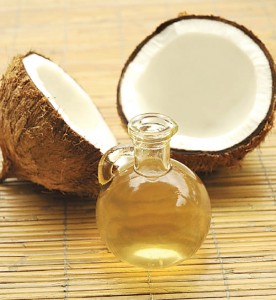 If you’re a fan of natural health remedies and always aim to keep your mouth in tip-top-shape, you may have heard about a centuries-old tradition from India referred to as oil pulling. The process is simple and is believed to rid the mouth of many different types of bacteria that contribute to bad breath, cavities and gum disease. There are a number of things you’ll want to know about this age-old procedure, though, so let’s learn about this process so you can determine if oil-pulling is right for you.
If you’re a fan of natural health remedies and always aim to keep your mouth in tip-top-shape, you may have heard about a centuries-old tradition from India referred to as oil pulling. The process is simple and is believed to rid the mouth of many different types of bacteria that contribute to bad breath, cavities and gum disease. There are a number of things you’ll want to know about this age-old procedure, though, so let’s learn about this process so you can determine if oil-pulling is right for you.
What is Oil Pulling?
Oil pulling is an Ayurvedic oral care routine that originated in India some 3,000 years ago. The process involves “swishing” or “swirling” a tablespoon of oil in the mouth for about 20 minutes in order to extract stain-causing pigments and bacteria from and around teeth. Proponents suggest oil pulling dramatically reduces the numbers of bacteria in our mouths and protects teeth and gums from bacterial damage.
How does it Work?
Even though oil pulling has been around for centuries, the scientific community in the West is only now beginning to conduct research into why oil pulling appears successful in being able to reduce overall levels of bacteria in the mouth.
One theory suggests the benefit is related to the cellular architecture of oral tissues. Because most microorganisms in the mouth are single-celled and covered by a fatty membrane, it is believed that when oil is being passed about the mouth, these cells are attracted to the oil molecules (that are likewise fatty), and thus become entrapped within the oil solution. When the oil is then spit out, the bacteria contained within it are discarded as well.
A second theory suggests the prolonged pushing and pulling of both oil and saliva throughout the mouth allows the oil to penetrate deeper below the gum line to attract as many microbes as possible – efforts proponents say cannot be duplicated through routine oral care habits. Detractors, on the other hand, say any reduction in the level of bacteria is simply tied to the aggressive mechanical action of swishing for so long, and that water alone could produce similar results. Disagreements such as these are precisely why more research is underway.
Will Any Oil Work?
Yes, however, most proponents of oil pulling recommend coconut oil because of its more mild taste, and because it contains lauric acid, a compound known to be antimicrobial. Sesame oil may be another option, yet it contains higher levels of Omega 6 oils (which as Americans we get too much of already) and is therefore a poorer fit from a health standpoint.
Are There Any Caveats?
Yes. In some populations, coconut oil can cause contact dermatitis, so loading up your mouth with coconut oil without first knowing if you have this sensitivity, or a related allergy, would not be wise.
Similarly, anyone nursing or pregnant should always speak with a doctor before trying anything out of the ordinary, and individuals with gum disease should never begin an oil pulling regimen without first speaking with a doctor because it can sometimes do more harm than good. It’s also worth noting that oil pulling should not be seen as an alternative to brushing and flossing. If anything, it can serve as a complimentary process to your normal routine, not a replacement.
As with any type of medicine, traditional or otherwise, you always have to do your homework. So, feel free to investigate online first, and then run your questions and concerns past a professional. Here is agood primer written by a dentist that can serve as a good launching point for your investigation. Good luck!
